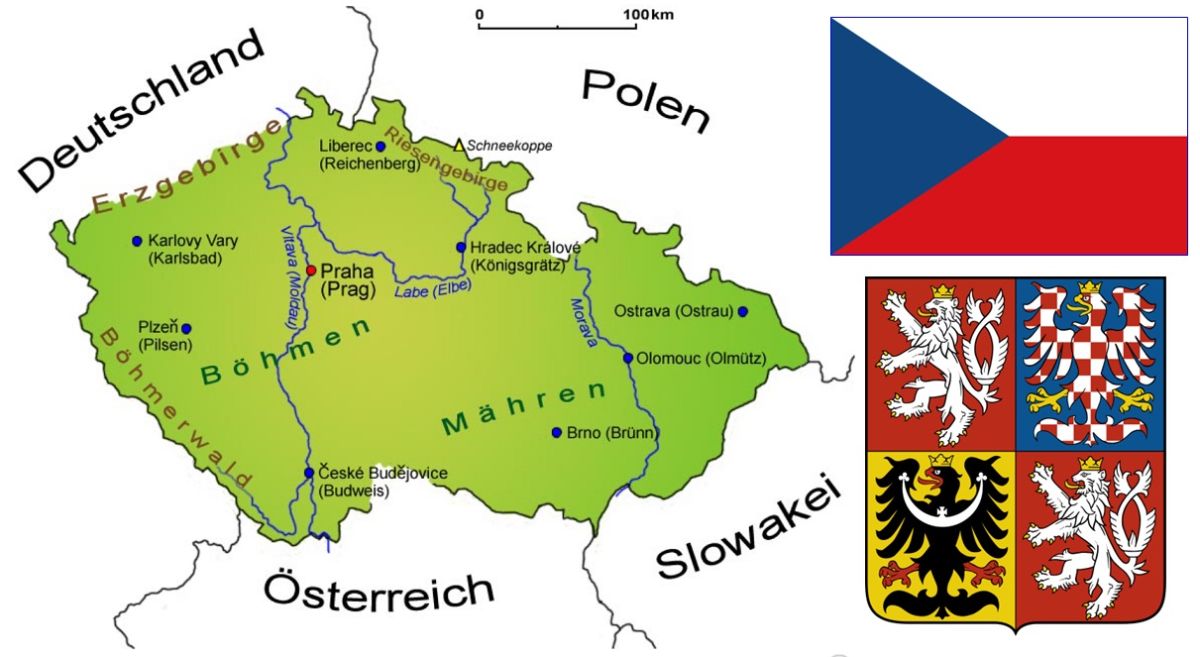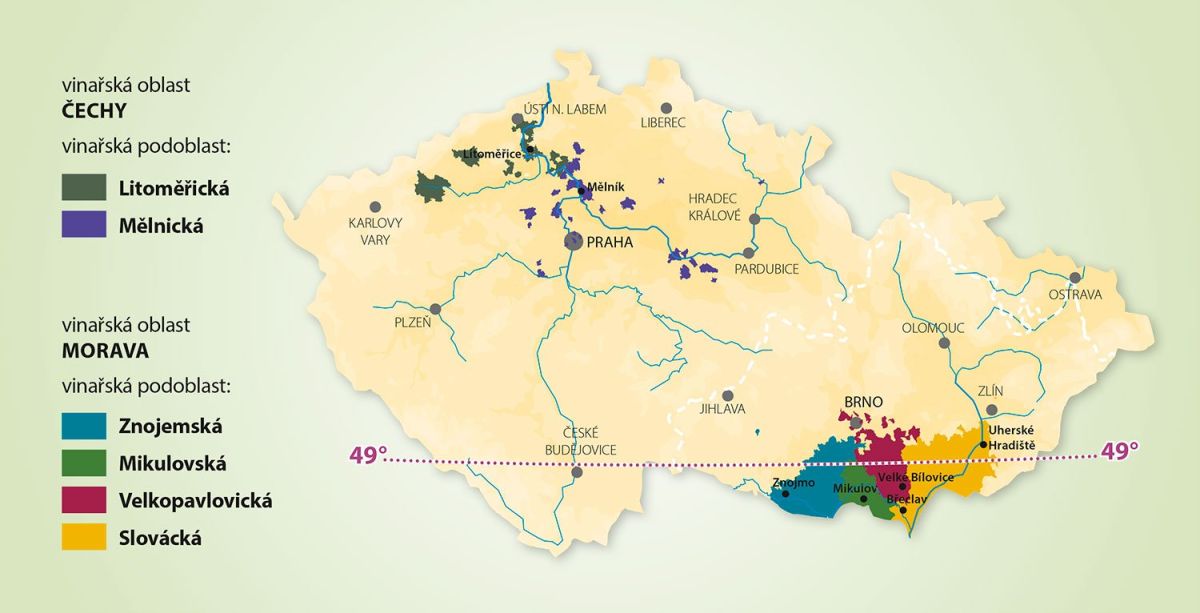Czech Republic
The Czech Republic (Czech: Česká republika) with its capital Prague (Praha) in Central Europe covers 78,866 km². It is made up of the historical lands of Bohemia (Čechy) and Moravia (Morava) as well as parts of Silesia (Slezsko). The country borders Germany to the west, Poland to the north, Slovakia to the east and Austria to the south. The independent states of Slovakia and the Czech Republic were formed from the former state of Czechoslovakia in 1993.

History
Viticulture dates back to the Celts. In the 3rd century AD, under Emperor Marcus Aurelius Probus (232-282), Roman legionnaires advanced as far as southern Moravia and planted vineyards in the Znojemská (Znojmo Land) region. Viticulture reached its first heyday in the 9th century during the time of the Great Moravian Empire. As in many other countries, the monasteries exerted a positive influence, as they needed mass wine. The Premonstratensian monastery of Louka near Znojmo, founded in 1190, stood out in this respect. This order was strongly influenced by the ideals of the Cistercians and, like them, practised professional viticulture. During the Middle Ages, there were flourishing vineyards around many towns and monasteries. The Thirty Years' War (1618-1648) caused a great decline. Mildew and phylloxera, which first appeared in Satov in 1890, took care of the rest. Reconstruction took place in the 20th century with newly planted international grape varieties.
Wine-growing regions
The vineyards in the Czech Republic are among the northern wine-growing regions of Europe. The country is divided into the two historical regions of Čechy (Bohemia) and Morava (Moravia), which also gave the two wine-growing regions their names. The climate is continental with a warm and dry growing season and dry, cool autumn.

Moravia (Morava)
The wine-growing region named after the Morava River lies in the south-east of the country. The vineyards cover 96% of Czech vineyards and are located between Brno (Brünn) and the Austrian border on the Danube tributaries Svratka (Schwarzach), Morava (March) and Dyje (Thaya). The first vineyards were planted by Roman legionaries. Emperor Charles IV (1316-1378), who ordered the planting of vineyards, was responsible for the greatest upswing in the Middle Ages. From a geological point of view, the Moravian wine-growing region is divided into the western part with the foothills of the Bohemian Massif and the eastern part with the western Carpathians. Moravia is divided into four sub-areas:
Mikulovská
The sub-region comprises 4,969 hectares of vineyards on the southern slopes of the Pálava Mountains in 30 municipalities. The most important are Bavory, Brod nad Dyjí, Dolní Dunajovice, Klentnice, Lednice, Mikulov, Napajedly, Novosedly, Pavlov, Perná, Popice, Pouzdoany, Sedlec u Mikulova, Strachotín and the wine-growing centre of Valtice. This is the warmest area. The calcareous soils consist of clay, claystone and loess. The best wines are made from Welschriesling, Chardonnay, Pinot Blanc and Müller-Thurgau.
Slovácká (Moravian Slovakia)
The sub-region comprises 4,336 hectares of vineyards in 117 municipalities such as Blatnice, Breclav, Bzenec, Čejkovice, Dolní Bijanovice, Kyjov, Hluk, Moravská Nová Ves, Mutenice, Napajedly, Petrov, Podluzi, Polesovice, Stráznice and Uherské Hradiste. The Knights Templar founded a fortress with extensive cellars in Čejkovice in 1232. The Templářské sklepy (Templar Cellars) winegrowers' co-operative continues this old tradition. Around 650 metres of underground corridors are open to the public as a tourist attraction. The white wine varieties Riesling, Pinot Blanc and Pinot Gris thrive here, as well as the red wine varieties Blaufränkisch, Zweigelt and Cabernet Moravia, which is cultivated in Moravská Nová Ves. Two very well-known wines are Bzenecká Lipka from Bzenec and Blatnicky Rohac from Blatnice.
Velkopavlovická
This largest sub-region covers 4,765 hectares of vineyards in 75 municipalities. The most important are Brno, Cejkovice, Klobouky u Brna, Nemcicky, Hustopece, Velké Pavlovice, Velké Bílovice and Zidlochovice. The soils consist of loam and loess. Excellent red wines from Blauer...
Voices of our members

I have great respect for the scope and quality of the wein.plus encyclopaedia. It is a unique place to go for crisp, sound information on terms from the world of wine.
Dr. Edgar Müller
Dozent, Önologe und Weinbauberater, Bad Kreuznach